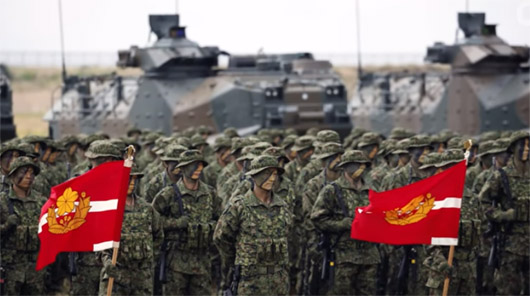FPI / December 6, 2019
Rising tension between Japan and China intensifying has led the Japanese Marines to re-form a fighting force that has not been seen since World War II.

Concerns that Beijing might seize outlying islands led to the formation in 2018 of the 2,100-man Amphibious Rapid Response Brigade (ARDB), based at Sasebo on Kyushu—formed under the ground force’s first unified command.
This year, ARDB soldiers with AAVs participated in the 2019 Iron Fist war games at Camp Pendleton, California in February, then in June took part in an amphibious landing exercise in Australia.
“Seventy-five years ago, the sight of 300 Japanese marines storming onto a Queensland beach in hulking tracked amphibious vehicles would have heralded a catastrophic setback to Australia’s national security,” Sebastien Roblin wrote in an analysis for National Interest. “But obviously, the world has changed quite a bit since World War II. The soldiers from Japan’s Amphibious Rapid Deployment Brigade (ARB) were not invaders, but participants in the international 2019 Talisman Sabre exercise held biennially on Australian soil.”
What is the operational concept behind the ARDB?
“Certainly, Japan shares with Australia, the Philippines and the United States a concern that China may seize key Pacific islands it could use to interdict maritime traffic. But Japan’s constitution forbids its forces from coming to the aid of allies,” Roblin wrote. “Thus, the ARDB’s purpose remains specific: to rapidly recapture Japan’s southwestern islands should they be occupied by Chinese forces. This remains in the United States and Australia’s interests, as the Japanese island belt effectively constrains PLA Navy operations.”
Disputes continue over the Senkaku/Diaoyu islands (the first name is Japanese, the latter Chinese), which are over 200 miles away from both mainland China and major Japanese islands.
Some Chinese scholars have argued that the more populated Nansei/Ryukyu island belt in southwestern Japan — which includes the Okinawa prefecture and is the site of a major U.S. military base — also rightfully belongs to China.
More . . . . Current Edition . . . . Subscription Information
Intelligence Brief __________ Replace The Media
